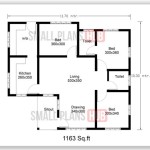Essential Aspects of Self-Sustaining House Plans
In today's world, the concept of self-sustaining house plans has gained immense popularity. These homes aim to minimize dependence on external resources and promote a more sustainable and eco-friendly lifestyle. If you're considering building a self-sustaining house, it's crucial to understand the essential aspects involved.
Energy Efficiency
One of the primary focuses of self-sustaining house plans is achieving energy efficiency. This involves incorporating passive design strategies, such as proper insulation, optimal window placement, and natural ventilation, to reduce energy consumption.
Additionally, renewable energy sources like solar panels and geothermal systems can be integrated to generate electricity and heat, making the home less dependent on fossil fuels.
Water Management
Water management is another key aspect. Self-sustaining houses often feature rainwater harvesting systems and greywater reuse strategies. Rainwater can be collected and stored for non-potable uses like irrigation and flushing toilets, while greywater from sinks and showers can be treated and reused for gardening.
Waste Management
Waste management is crucial for minimizing environmental impact. Self-sustaining house plans often include composting systems to convert organic waste into nutrient-rich soil amendment, reducing the need for chemical fertilizers.
Food Production
Some self-sustaining house plans incorporate food production elements. This can range from small-scale gardening to larger-scale greenhouses. Growing your own food reduces reliance on external suppliers and promotes a healthier lifestyle.
Heating and Cooling
Heating and cooling systems are essential for comfortable living. Self-sustaining house plans often utilize passive solar design techniques to maximize natural heat gain during winter and passive cooling strategies like cross-ventilation during summer.
Additionally, energy-efficient heat pumps and geothermal systems can provide efficient and sustainable heating and cooling solutions.
Materials and Construction
The materials and construction methods used in self-sustaining house plans also play a significant role. Sustainable and locally sourced materials, such as recycled steel, bamboo, and earthen plasters, can reduce environmental impact.
Green building techniques, such as low-VOC paints and non-toxic adhesives, can promote indoor air quality and reduce the carbon footprint.
Professional Consultation
Building a self-sustaining house requires specialized knowledge and expertise. It's highly recommended to consult with an architect, engineer, and other professionals who specialize in sustainable design to ensure proper planning and execution.
Conclusion
Self-sustaining house plans offer a unique and innovative approach to sustainable living. By incorporating energy efficiency, water management, waste reduction, food production, and sustainable heating and cooling systems, these homes aim to minimize environmental impact and promote a more self-sufficient lifestyle.
While the initial investment in a self-sustaining house plan may be higher than conventional homes, the long-term savings on energy bills, reduced environmental impact, and improved health and well-being make it a worthwhile investment for those committed to sustainability.

A Little Self Sustainable Homestead You Only Need Few Acres Outside Of Town To Build Farmhouse Landscaping Sustaining Home

How To Build A Totally Self Sustaining Home

Self Sufficient Energy Efficient Duurzame Architectuur Duurzaam Ontwerp Huisdesign

Self Sustained Smart Structure Yanko Design Green Building Architecture Sustainable

Smart House By Baufritz First Certified Self Sufficient Home In Germany

A Self Sufficient House Cozy Comfy Mini Farm Layout Acre Homestead

Eco Design Energy Efficient Homes Greenmatch Co

Power Interchange And Energy Self Sufficient Houses Co Creating A Brighter Future With Stakeholders For Sustainable Daiwa House Group

Eco House Design Home Greenhouse Garden Cabin Ideas

Green Building Designs Plans And Guidelines








